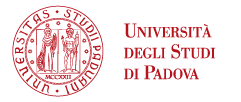TerrACE
Acronym: TerrACE
Title: Terrace Archaeology and Culture in Europe
Call: Horizon 2020 - European Research Council
Duration: 60
Coordinator: P1 - University of Tromsoe (N)
Total EU Contribution: € 2.662.929,00
TESAF Budget: € 207.632,50
Responsible Scientific Officer/Investigator: Paolo Tarolli
Research Team: Paolo Tarolli, Sara Cucchiaro, Eugenio Straffelini
Brief description: Large areas of agricultural terracing have been abandoned and are being destroyed in Europe. TerrACE will develop a transferrable methodology of archaeological protocols for understanding the creation, maintenance and use of terraces over the longue durée, thereby informing strategies for the sustainable management of these environmental-fragility hotspots. Terraces and lynchets are hallmarks of complex Prehistoric to Post-Medieval societies and were critical for the sustainability of many European societies (including the Greeks & Romans). However, we typically know less about them than any other archaeological site type, although they were one of the first transformations of natural into cultural landscapes, which in many cases persisted to the 20th century. Key archaeological questions are: how old are terrace systems, how were they used, did they reduce soil erosion and are they carbon sinks? The answers to these questions have high relevance in Europe today as terraces can combine high yields with decreased erosion and fire risk, whilst increasing social resilience and food security in the face of environmental change.
TerrACE will be a step-change in our archaeological approach by integrating a raft of new and innovative scientific techniques through an exemplary study of the creation, operation and abandonment of terraced landscapes on a N-S climatic transect of well-known/excavated terraces across Europe. TerrACE has 5 objectives; 1) improving terrace-landscape mapping, 2) multiple dating typical terrace systems, 3) determining history of use and management, 4) understanding the role of terraces in carbon storage, and 5) outreach to promote terraces as part of Globally Important Agricultural Heritage Landscapes (UNESCO GIAHS). TerrACE is only now feasible due to the development of techniques including LiDAR, direct sediment dating, palaeoenvironmental proxies, soil carbon modelling and the innovatory use of ancient DNA on terrace palaeosols.
Sito Web: https://cordis.europa.eu/project/rcn/218698/factsheet/en





